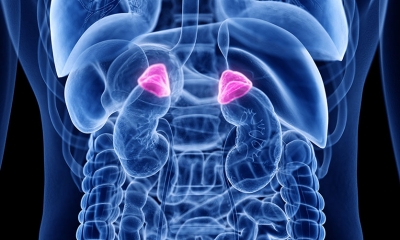Positive thinking isn’t just a great catchphrase. You can experience the scientific benefits of positivity. If optimism oozes from your every pore, cheers to you! But if your glass sometimes seems half empty, there’s good news—with a little effort, it’s relatively easy to trick your brain to be happy.
A positive outlook supports your immune system, aids in maintaining calm, and helps you adapt to change. Studies on the effects of positive thinking even show links to supporting long-term cardiovascular health.
Eric Kim, research fellow in the Department of Social and Behavioral Sciences at Harvard says, “Our new findings suggest that we should make efforts to boost optimism, which has been shown to be associated with healthier behaviors and healthier ways of coping with life challenges.”
Positive thinking activates happy brain chemicals that can optimize your health, coping skills, and quality of life.
How Positivity Affects the Brain: The Science
Positivity affects the brain through chemical messengers. Neurotransmitters—like dopamine, serotonin, and oxytocin—play a major role in supporting your physical and mental health. They do this by sending instructions from brain cells to your muscles and organs. These chemicals help your brain and body work in tandem—so keeping them balanced is key.
The release of neurotransmitters has many triggers. And some may surprise you—like the plants that surround you. Multiple studies show indoor plants keep you feeling healthier and happier, but the benefits go both ways. You’ve probably heard talking to plants may help them grow better. But why? The theory is that plants may respond to the vibration and tones of the human voice (or music).
You aren’t so different. Just like plants, humans respond to vibration and tones. Life is a sea of rhythms that regulate several cardiac and neurological functions. Music and tones can support the activation of measurable stress-reducing pathways, and may even help maintain healthy heart rate, respiration, EEG measurements, body temperature, and blood pressure already in the normal range. Tones are also tied to immune and endocrine support, which may keep you feeling calm, energized, and in a good mood. All this explains what you already experience for your favorite songs. When you hear that perfect pitch, you feel it from your head to your toes.
If kind words and good vibrations—from music or positive talk—help plants grow, imagine what speaking kindly to yourself will do.
Physical Effects of Positive Thinking
When talking about the benefits of positive thinking, it’s not to encourage “toxic positivity”— invalidating what you’re experiencing by pretending everything is fine. But when a rough patch comes your way, finding the positives is better than allowing negative thoughts to run amok.
Even a few happy thoughts can evoke the following scientific benefits of positivity:
Support the immune system—When your body encounters occasional stress, these stressors can negatively impact your endocrine system and immune response. But your attitude toward stress also affects your immune response. It’s time to look at positivity as a tool that can help lead to health benefits.
Maintain calm—If anxiety is exacerbated by negative and intrusive thoughts, the opposite is also true. Expecting a positive outcome is a helpful formula to support calm, serenity, and balanced mood.
Optimizes resilience—How well you cope with problems defines your resilience. Rather than falling apart during challenges, positivity helps you to carry on and adapt to change.
Your positive thinking is reflected back to you in amazing ways. The next step is to train your brain to be happy, while respecting that all your feelings are valid.
3 Ways to Boost Your Bright Side
Living a healthy, happy life through the effects of positive thinking is appealing. But the world isn’t always hearts and flowers, and a positive frame of mind doesn’t come naturally for everyone.
Training your brain to be happy takes a little bit of work, but it’s your best go-to when life gives you lemons. Here are three ideas to spur positivity:
1. Trigger Your Happy Brain Chemicals
Tailor your lifestyle to fire up those neurotransmitters!
Use body movement to create positive thoughts—Certain body movements release happy brain chemicals. That’s why smiling, even if you don’t feel like it, can make you feel better. Even the simple gesture of holding both arms above your head in a victory stance sends happy signals to your brain. Move in ways that make you feel good—dance, swim, exercise, stand up straight, or just smile.
Listen to tones and music that help release neurotransmitters—Test key tonality and vibrations that work for you. Examples include music, laughter, or applause. To experience some funky tone therapy, listen to binaural beats by playing this Happiness Frequency track with headphones in both ears.
2. Keep a Grip on the Now
It’s easy to be so caught up in the daydream of your past and future that you forget that now is the only time there is. Teaching yourself to focus on the present is possible, and it offers plenty of benefits. It gives you time to calm down, prevents overthinking, and helps you make better decisions. To bring yourself into the moment:
- Focus on your breath—Feel the air movement, watch your chest rise and fall, and count your breaths.
- Pay attention to your senses—Focus on what you see, smell, touch, taste, or hear right now.
- Meditate—Use guided meditation, sit quietly in a traditional way, or focus on white noise. Other ideas are to “feel” the energy in your hands, count the dishes you’re washing, or tally your steps.
3. Be Your Best Friend
Positivity is an inside job. Does the person in your head say nice things to you? Do you talk to yourself the way you would speak to your best friend? Jack Canfield, creator of Chicken Soup for the Soul, says “affirmations are to the mind what exercise is to the body.” And repeating affirmations helps to reprogram your unconscious mind for success.
Your positive self-talk should be simple and believable. Positive affirmations you don’t believe will get you nowhere. Try these techniques:
- Start small and work your way up—Begin by telling yourself easy and general affirmations:
“I am enjoying the sunshine on my face.”
“All I need to do right now is breathe.”
“I have made it through hard times before.”
- Get specific—As you become more confident in the positive reality you’ve created, you’re ready to move on to more personal affirmations:
“I welcome good things in my life.”
“I am healing.”
“I am worthy.”
“I can do this.”
- Write it down—Writing out your affirmations can make them even more powerful. Your brain engages in the thought, and you develop a stronger conceptual understanding of what you’re thinking. Rewrite your affirmation over and over and let it sink in.
- Go digital—Bring positivity to the forefront of your mind with mindfulness apps. You’ll find some suggestions in these helpful articles—13 Best Daily Positive Affirmations Apps for 2021, The 5 Best Mood-Tracking Apps, and The 7 Best Meditation Apps to Try in 2021.
Retraining your brain takes effort, but the effects of positive thinking last a lifetime. Even if life is not all roses and sunshine, learn to let the rain water your garden. Then you can sit back and watch your health blossom.
References
https://www.hopkinsmedicine.org/health/wellness-and-prevention/the-power-of-positive-thinking
https://medium.com/swlh/3-scientific-studies-that-prove-the-power-of-positive-thinking-616477838555
https://news.harvard.edu/gazette/story/2016/12/optistic-women-live-longer-are-healthier/
https://www.hopkinsmedicine.org/health/wellness-and-prevention/the-power-of-positive-thinking
https://www.verywellmind.com/benefits-of-positive-thinking-2794767
https://www.ncbi.nlm.nih.gov/pmc/articles/PMC4010966/
https://www.frontiersin.org/articles/10.3389/fpsyg.2015.02030/full
https://www.goodnet.org/articles/6-ways-to-use-body-language-make-yourself-feel-great
https://news.harvard.edu/gazette/story/2016/12/optistic-women-live-longer-are-healthier/




































